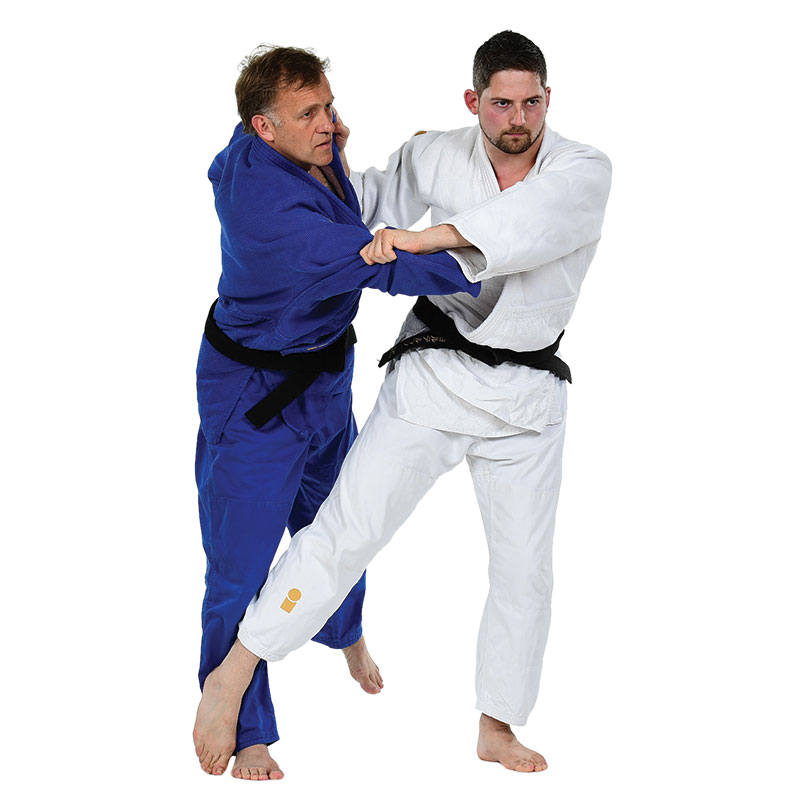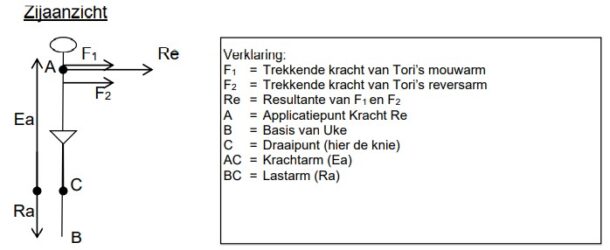Ashi-guruma 足車
Leg Wheel
Classification: Ashi-waza (leg technique)
Japanese meaning:
-
Ashi = leg
-
Guruma = wheel
Technical Description
Ashi-guruma is a leg technique that uses a cross-step entry, often referred to in Japanese as mawari-komi (rotational entry).
Tori breaks uke’s balance (kuzushi) toward the front or right-front corner, initiating a rotational movement. Then, tori:
-
Turns to the left (for a right-sided technique),
-
Extends their right leg across uke’s right knee from the outside, blocking it just below the joint,
-
And uses a large, circular motion with the arms to wheel uke over the leg.
The throw resembles O-guruma, but the contact point is lower—around the knee instead of the upper thigh. This creates a smaller radius in the wheel, but allows for tighter control and more explosive rotation.

Biomechanics of Ashi-guruma
This technique functions as a lever (hefboom):
-
Tori creates a pivot point (C) just below uke’s knee by blocking it with the extended leg.
-
Uke is then rotated around this pivot, while tori’s arms (F1 and F2) generate the torque needed to throw uke.
-
The cross-step footwork enhances the rotational momentum, increasing effectiveness even against a resisting uke.

Did You Know?
-
The term mawari-komi literally means “full rotation” and is commonly used to describe throws with a spinning, circular entry like Ashi-guruma and O-guruma.
-
The word hikikomi means “complete pulling” and refers to sacrifice throws (sutemi-waza) where tori pulls uke down while falling, such as Soto-makikomi or Hane-makikomi.
-
And the suffix gaeshi means “reversal” (derived from kaeshi), found in counter throws like Sumi-gaeshi or Tawara-gaeshi.